On the 28th of November 2014, builders from John Dennis Ltd working on the HLF Lister Project at the Royal College of Surgeons of Edinburgh unearthed a time capsule, buried beneath the south east corner of the Playfair building. Stored in a snuff tin were two newspapers from March 19th 1909, two postcards and a list of names dated March 26th 1909. We have been expecting to find an ‘official’ capsule but this one came as a bit of a surprise as it must have been placed secretly without the knowledge of the College during the 1909 extension work!
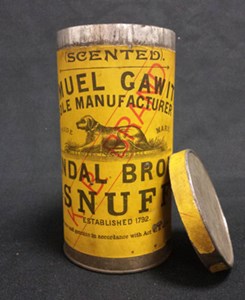 Snuff tin
Snuff tin
Considering the tin has been underground for over 100 years, it is in surprisingly good condition, as are the contents. The tin would have originally contained Kendal Brown Scented Snuff, manufactured in the town of same name, in the Lake District, by Samuel Gawith. Given that a regular tin held 10g of powdered tobacco, this would have held a considerable amount of snuff, perhaps shared by the men for use during their working day. It is still in production today, using much of the original machinery from the inception of the company in 1793.
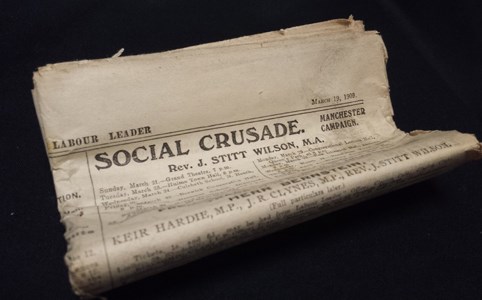 The Labour Leader: A Weekly Journal of Socialism, Trade Unionism and Politics
The Labour Leader: A Weekly Journal of Socialism, Trade Unionism and Politics
The first newspaper, The Labour Leader: A Weekly Journal of Socialism, Trade Unionism and Politics, was set up by Scottish socialist Keir Hardie M.P. Hardie is regarded as one of the pioneers of the Independent Labour Party and Labour Party, which grew out of the trade union and socialist movements of the nineteenth century. The paper carries a number of articles concerning socialist movements throughout Europe, and includes stories on the Paris Strike, ‘The Liberal Betrayal’, ‘Welsh Notes’ on the threatened coal strike and the Russian revolutionary ‘Azeff Affair’.
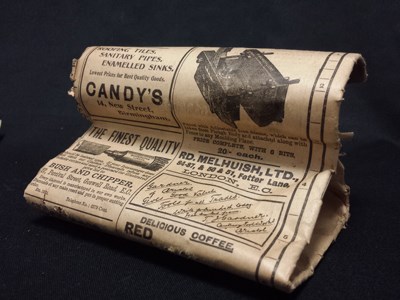 The Illustrated Carpenter and Builder
The Illustrated Carpenter and Builder
The second newspaper is The Illustrated Carpenter and Builder, a weekly journal published by John Dicks and established in 1877. It includes all manner of building-related articles, discussions, floor plans and scale drawings. This week’s cover story concerns the designs for a suburban house “near London”, to cost £500. This equates to approximately £52,500 today.
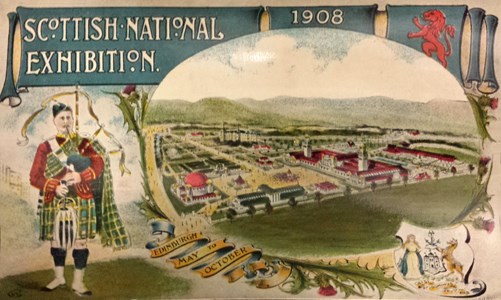 Scottish National Exhibition of 1908 Postcard
Scottish National Exhibition of 1908 Postcard
Also included are two postcards depicting the Scottish National Exhibition of 1908, which took place to the west of the city in the grounds of the Saughton Hall Estate. It featured a Senegalese village, a water chute, helter-skelter and a figure eight railway. Over 3.5 million people visited the exhibition over six months, with entrants being charged 6d.
Finally, there is the piece of paper listing all the joiners from Scott Morton & Co. who carried out interior design work during the 1909 construction. Scott Morton and his brother John set up business in 1870, and through a number of permutations, the company continued until 1966. It was then taken over by Whytock & Reid, the company who actually made most of the furniture for the 1909 work, including all ninety seven Playfair Hall chairs still in use.
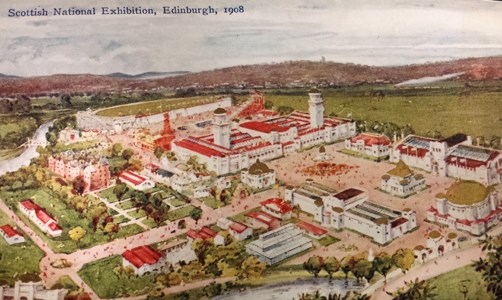 Scottish National Exhibition of 1908 Postcard
Scottish National Exhibition of 1908 Postcard
This fascinating piece of College history will become an important part of our redisplay as it gives us an insight into the lives of those who were part of the process of building the College’s physical identity that we see today.
This post was written jointly by the Museum staff







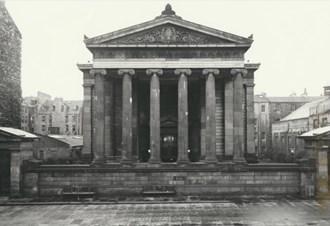
 Hidden Time Capsule
Hidden Time Capsule